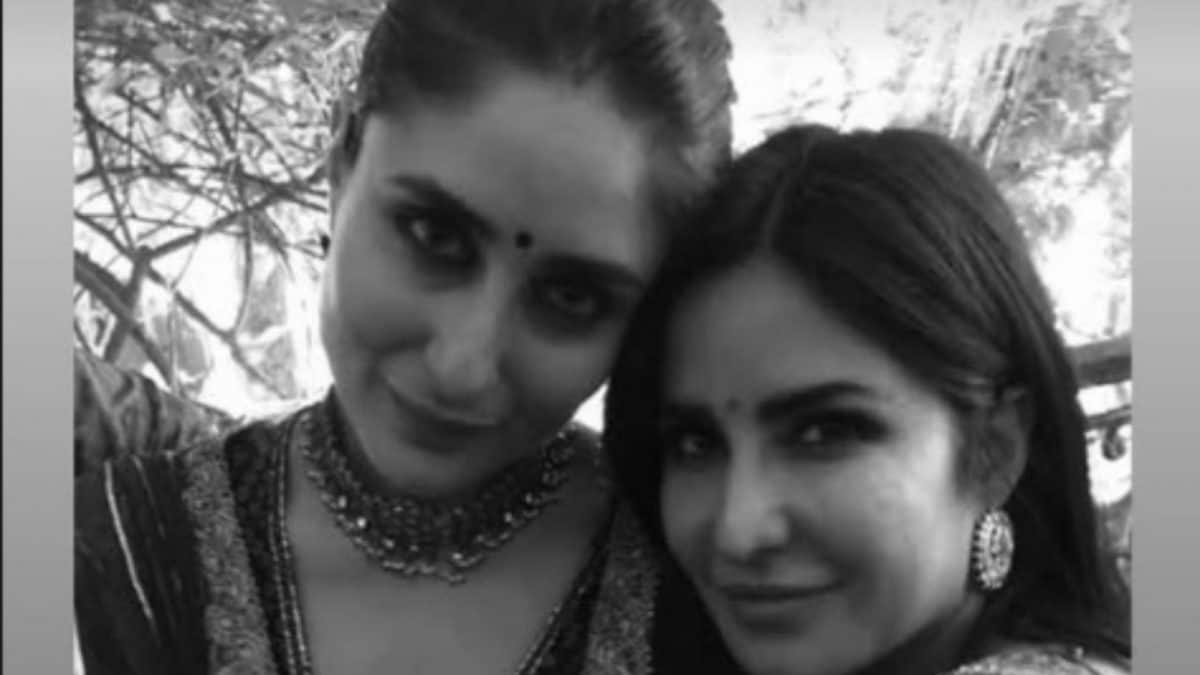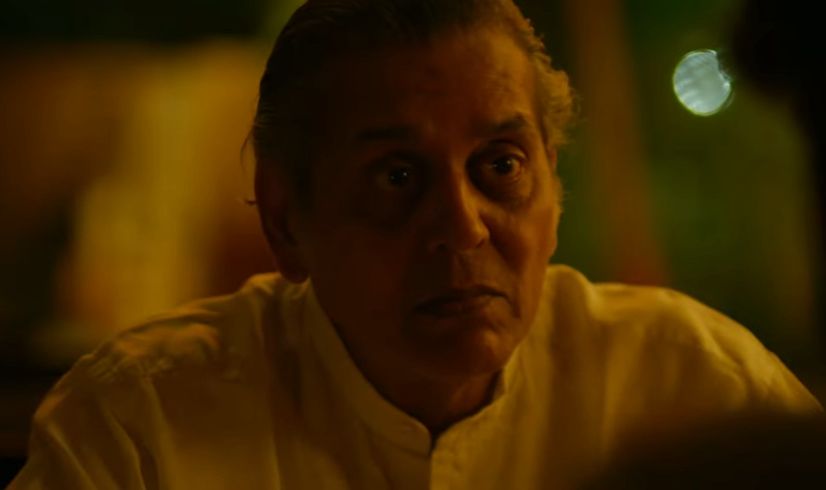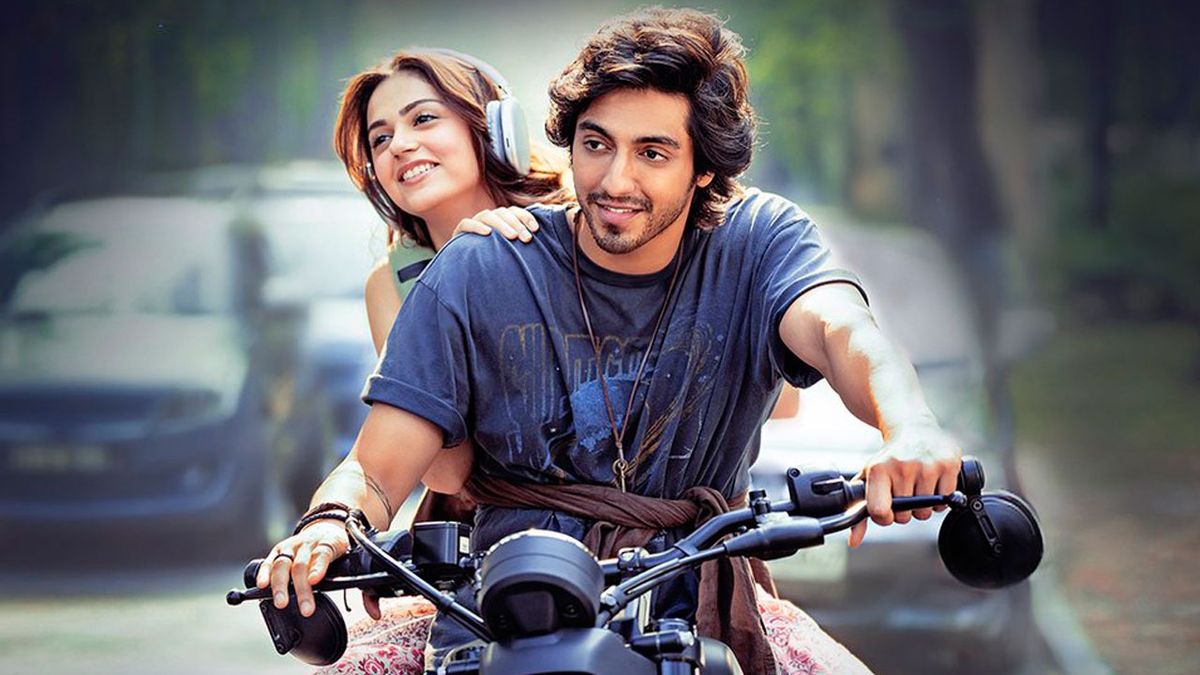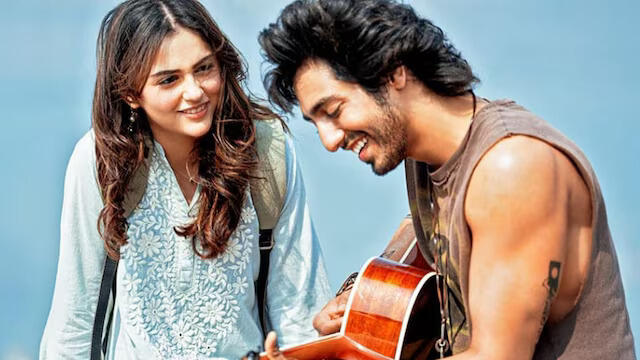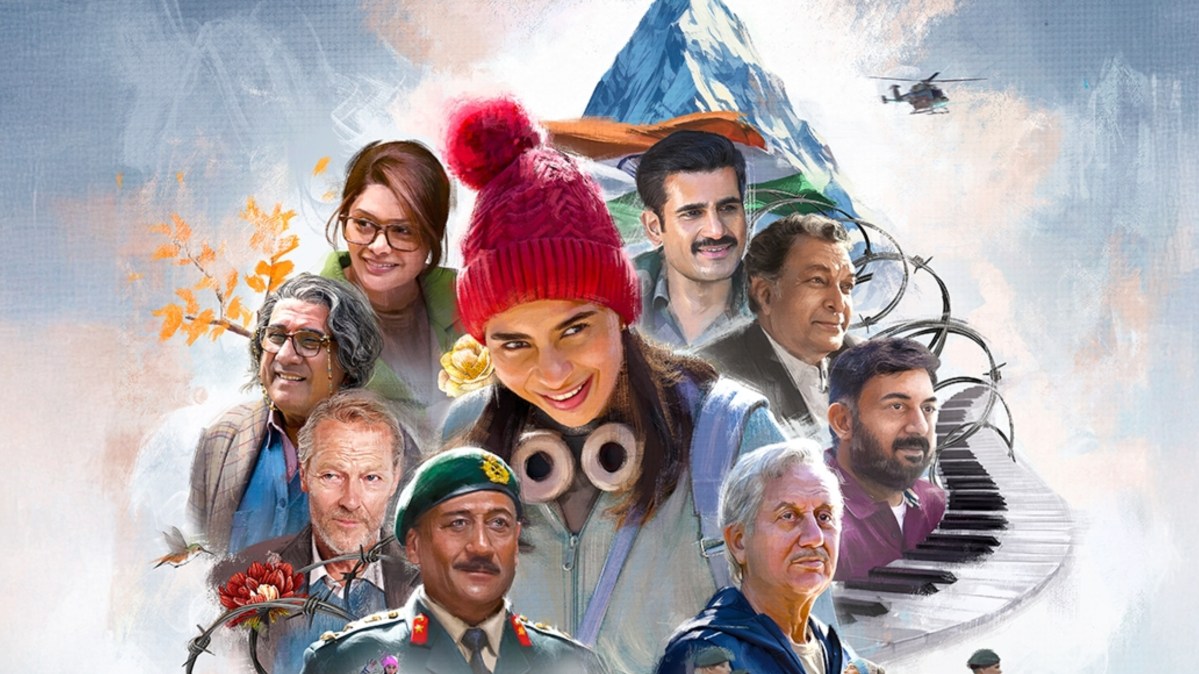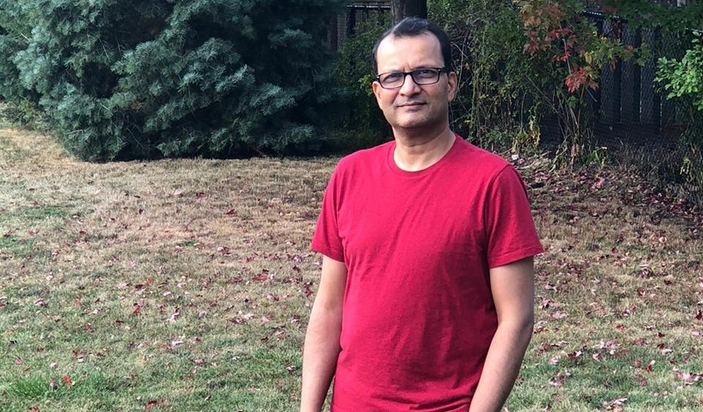
“I always had a dream to write a book on music” – Pawan Jalan
Pawan Jalan was one of the first individuals who started uploading guitar based tutorial videos on YouTube. His YouTube channel, now referred to as Khaas Baat | Rhythm Guitar Lessons | Pawan (YouTube.com/PawanJalan), went live in the year 2007 and since then, he has uploaded numerous videos which serve as instructions for playing popular Hindi film songs on guitar.
Pawan, who is from India and now works for the finance sector in Canada, was extremely passionate about music from a young age and that led him towards composing and teaching music in his spare time. Recently, Pawan wrote and released a book titled ‘Khaas Baat – A Rhythm Guitarist’s Handbook’ which, as the name suggests, features a comprehensive guide for rhythm guitarists.
In this interview, Pawan talks about his recently released book, the challenges he faced while writing it, his journey in music, love for Hindi film music, favourite artists, the experience of recording an album for HMV (now known as Saregama), future plans and more.
Your book ‘Khaas Baat – A Rhythm Guitarist’s Handbook’ released recently. After making YouTube videos and helping people across the world learn several popular songs on guitar through a visual medium, how did you think of writing a book on music/guitar?
I always had a dream to write a book on music. Back in my beginner days, I would often look for a book of this kind that talks about chords, scales and how they are connected to different songs. I couldn’t find such a book back then. I knew it would take a lot of effort to come up with something comprehensive. As I started doing lessons online, I tried to cover songs of different types. That helped me solidify the idea for a book. I thought of writing a book which would have basic information on foundational concepts of music, and detailed information on chords and scales used in different songs. My viewers had been asking me for a book for some time. This could be used as a reference book with key concepts laid out in detail. I wanted to leave behind a body of knowledge which people could use.
What is the biggest challenge you faced while writing this book?
I think the biggest challenge was to find the time to write it. I have a day job. I record guitar lessons in my spare time. When you see a five-minute video, you feel that putting it together must have been quite easy. However, that’s not true at all. One has to coordinate with different artists and it takes a while to plan, record, shoot and edit the lesson. Writing a book meant taking more time out of my schedule. I built my content gradually, and finally reached a point where I felt I could come up with something concrete. I live in Canada and I could publish the book through Amazon. They print on demand, so that part was easy. In India, I had to find a local publisher who could work with me and that was not easy. My book had a very niche audience and no one in the publishing industry knows me. Getting the book out in the Indian market was quite a challenge.
You have dedicated this book to the ‘Bollywood music ecosystem’. On your YouTube channel, you have mostly shared video lessons on popular Hindi film songs. Tell us something about your love for Hindi film music. When did you get so fascinated by it? What, according to you, makes it unique?
I have always used Bollywood songs to teach rhythm guitar on my Khaas Baat channel, and the concepts in my book are also illustrated through the songs of Bollywood movies mostly from the 60s and early 70s, the so-called “Golden Era” of Bollywood music. This was the time that saw poetry, singing and music at a peak with several legendary names whose immortal compositions continue to be used in movies, television shows and live performances even today.
Songs from that era were a creation of multiple talented geniuses working together to create a unique composition with the vocals, lyrics, melody, rhythm, harmonies, chords and the entire music arrangement all the way to its mixing designed to deliver the emotion that the situation in the song or movie demanded. This was what made Bollywood music unique!
Let me take some examples to illustrate my point. Take the song “Jaane Kahan Gaye” from the film “Mera Naam Joker”. The pain in the poetry by Hasrat Jaipuri is expressed so soulfully by Mukesh Ji, the composition by the one and only Shankar-Jaikishan duo based on Raag Shivranjani, the opening lines on the violin, the harmony and chord arrangements, all of which accentuate the pain and anguish on the silver screen delivered by the greatest showman Raj Kapoor Saab.
Take another example “Chingari Koi Bhadke” from the film “Amar Prem”. Another classic where the poetry by Anand Bakshi, music by Pancham Da and vocals by the one and only Kishore Da are all superbly integrated to bring the pathos in the song to life with the all-time romantic superstar Rajesh Khanna Saab on screen.
While you were growing, who were the musical artists you admired? From the current lot of composers in the Hindi film industry, do you have any favourites?
I grew up with the music of Pancham da (RD Burman). He will always be my favourite composer. I guess it has also got to do with the fact that I am a rhythm guitarist. As far as singers are concerned, Kishore da, Rafi saab and Lata di are my favourites. I don’t think one will ever come across any singer who would match the talent, energy and versatility of singers from that era. There is no dearth of talent. However, the ecosystem has changed. Earlier, there was a connection between the artist and the final product. From today’s singers, I like Sonu Nigam and Shreya Ghoshal the most. I like Shankar – Ehsaan – Loy and Vishal and Sheykhar’s music. Though Ismail Darbar doesn’t do a lot of work these days, I love most of the songs he has done. His songs were rich in emotions.
Which are some of the songs that are close to your heart?
This is a tough question, there are so many that it’s impossible for me to name a few! Most of my favourite melodies are from the 60s and 70s, especially songs by Kishore Da and composed by Pancham Da. If I was to narrow them down by melodic content, I would say songs based on Raag Shivranjani are closest to my heart, like Mere Naina Sawan Bhadon (both Lata Di and Kishore Da versions – am working on a lesson for both). If I was to narrow down happier number, Musafir Hoon Yaaron is close to my heart, almost like an anthem that’s telling me to keep my music and lessons going as long as I can hold the guitar!
In the book, you have broken down the chords for several popular Hindi film songs. These songs are divided into different categories based on the scale/key they are composed in. What kind of learning, you hope, the reader will have while or after reading the book?
I think readers will able to connect to the dots after reading the book. These days, a lot of people put up chords for different songs on the internet. You can go through those tutorials and play along. However, this will not help you expand your knowledge. When you come across a song and identify its scale or patterns, the process of understanding it becomes much faster. For instance, most songs based on Raag Yaman and Kalyan use the Lydian scale. If you learnt the concepts behind the scales and chord progressions, you will be able to quickly identify chords and figure out the scale.
Let’s talk a bit about your journey in music. You grew up in Kolkata, India, trained to become a chartered accountant, worked in the IT industry and now, live in Canada. You never had any professional training in music. Was it easy to learn the various nuances of an instrument like guitar on your own?
No, it wasn’t easy. I never had any formal training in music. I started learning conga, which is a rhythm instrument. I would play it along with songs in my spare time, I would play songs on it. I had a good sense of timing and was able to pick up the timing for any song spontaneously. Every time I would listen to a song, I tried to analyse what the pattern was. Since I was passionate about singing, somebody advised me to start learning the rhythm guitar. There were no computers back then and we had only books to refer to. It was quite tough to learn everything on your own with limited resources around. I read a few books, met a few musicians along the way and all that helped me grow as a musician.
As a self-taught musician, do you think professional training is important for a musician?
Professional training is important for all musicians. If you are unable to get personal lessons from a music teacher, you can opt for online classes. Professional training has become much more accessible now. Having somebody out there who can guide you always helps. As you keep playing, you develop certain habits and reflexes, and if you are playing or incorrectly and develop bad habits it is very hard to unlearn them! I am saying this from experience. I never got formal training and developed bad habits while learning on my own!
In the early ‘90s, you released a private/non-film album called ‘Dilkash’ in collaboration with Sa Re Ga Ma (then HMV). As somebody who was not directly associated with the film/music industry, how did you manage to cut an album with a mainstream music label? How was that experience like?
Maybe it was destiny. I did not have too many connections. I used to play with friends at social functions. Along the way, I got inspired and met some people who worked in the music industry. My wife used to write songs. We created some songs together and shared with friends, who loved them and encouraged me to publish those songs. We decided to invest some money and record something with professional musicians and reach out to music labels. HMV gave me a call and told me they would publish the songs. Luck played a big part in all this. Shortly after this, I got extremely busy with my family and career and could not give a lot of time to music. We did one more album but it could not get published. However, music continued to be an integral part of my life.
Do you plan to do some work in the music industry today?
Twenty years back, I moved to Canada. I started performing with some of the local artists there. That is when I got a lot of exposure. A few years after YouTube was launched, I created my own channel and started uploading guitar lessons on it. I have been collaborating with several singers and musicians for my video lessons. I don’t have plans to work with any mainstream label at this time. However, I will continue to produce music and make them available through YouTube and other channels.
You have a home studio in Canada where you record a lot of original music. Do you have plans to release such music in the future?
No immediate plans at this time! Over the years I developed very strong relationships with musicians, writers, singers and actors here in Canada who were also pursuing their passions like me. Most of the original music I have produced have come out of moments of inspiration with my artist companions, and am sure something will come up again soon!
Both your YouTube channel and the book are called ‘Khaas Baat’. Your website’s domain name is khaasbaat.in. Is there a particular reason behind it you using this term/phrase?
While doing these lessons, I would often talk about the theory behind the song. I used to say something like, “aaj hum iss gaane ke bare mein kuch khaas baatein karenge”. I would share some nuggets related to the song. The name got stuck in my mind and I thought it would connect with my viewers. That’s when, I renamed the channel as ‘Khaas Baat’ and used the same for my website and book as well.
Do you have plans to write another book?
I spent a lot of a time lot of researching to ensure every piece of information in the book was accurate. At the same time, I wanted to come up with something which was easy to read so I had to draw the line somewhere. At some point in time, I will come up with another edition of ‘Khaas Baat’ to cover more topics and more songs as well!
Publisher: Source link
